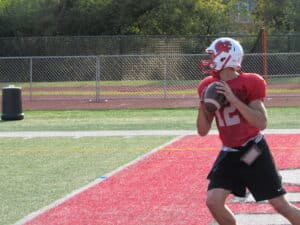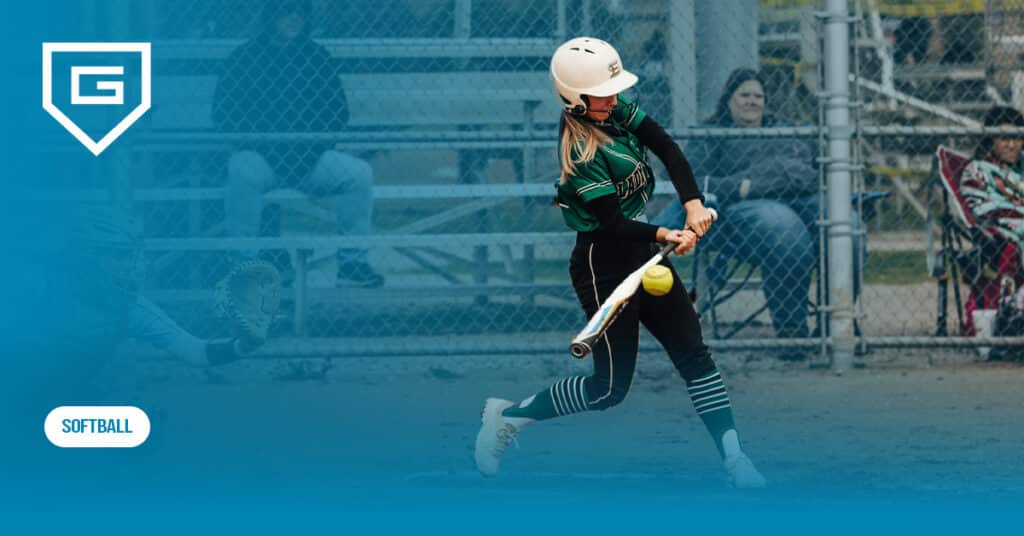How a Coach to Player Communication System Boosts Field Performance
Reading Time: 9 minutes
Reading Time: 9 minutes

An interesting study published on Frontiers in Psychology analyzed data from three soccer seasons and found that coaches made formation changes in 43% of the games. The analysts concluded that these decisions “helped the team to turn an average or below-average performance into better performance during the 10 min after the formation change”.
There’s no denying data – active coach support during the game is an advantage, and what’s true for soccer remains true for games in the NFL (National Football League) and other major leagues in the US.
Effective communication is also critical for coaches who want to help their players achieve their full potential.
However, while it’s important to communicate, it’s also essential to do so quickly, reliably and securely. It’s where a digital coach-to-player communication system comes in.
What is a coach-to-player communication system?
A coach-to-player communication system includes devices that allow coaches to communicate with players on the field or court during a game.
The system typically consists of a transmitter headset/tablet worn or carried by the coach and a receiver earpiece within the helmet, an arm band, or another wearable worn by the players.
These devices provide private, wireless communication, enabling the coach to give instructions, feedback, or encouragement to the player without shouting or using hand signals. You can also use such a system to relay information from other sources, such as video analysis or statistics, to the player.
An electronic communication system can enhance players’ performance, coordination, and safety in various sports. Let’s look at the specific advantages.
The key benefits of a coach-to-player communication system

Here are the key benefits of using advanced, modern wearable technology in sports.
1. Accelerating on-field decisions
In sports, quick thinking and rapid strategic adjustments are crucial. Being late with a critical decision during the game’s last minutes or a rival team’s lightning-fast counterattack can be costly. A reliable coach-to-player communication system lets you send information with a single button and instantly delivers it to players on the field.
2. Mastering team coordination
Coordinating a team can be quite challenging, especially during intense moments when the game’s outcome is uncertain. However, it becomes much easier when all relevant players receive precise commands within split seconds. Effective communication is critical to successful team coordination.
3. Perfecting execution precision
As a coach, you have a unique perspective from the bench or dugout that players lack while on the field. This position enables you to guide and direct their actions, helping them execute the right tactics at the right time.
An electronic coach-to-player system can enhance this experience even more by providing a faster, more direct, and secure way to communicate with your team during crucial moments.
4. Elevating player performance

As a coach, you have a better understanding of your players than they have of themselves. It allows you to guide them to improve their performance when necessary.
With the help of pitch calling devices for instant communication between you and your players, you won’t miss any opportunity to help them showcase their abilities and achieve greatness.
5. Winning more
Efficient and secure information exchange allows your team to coordinate better and execute the game plan without compromise. You no longer have to limit your tactics because you can’t talk or communicate information effectively in other ways, resulting in higher win rates.
6. Staying agile in changing game conditions
Having a coach-to-player communication system is a game-changer for any team. It helps you stay flexible and adapt to unexpected events that can happen during a game. Whether it’s a surprise from your rivals or a sudden turn of events that can help you get the winning edge, this system is faster and more effective than traditional methods.
7. Stress-proofing your team
An electronic system that enables communication between the coach and players can significantly reduce the stress and pressure on players. During crucial moments when the game’s outcome depends on the player’s performance, they will never feel alone. Even if their emotions get the best of them, players can always rely on the coach and the communication system for support.
8. Reducing miscommunication and misunderstandings
A well-integrated system ensures that all the key players are aligned and informed about the task at hand, leaving no room for miscommunication or misunderstandings.
Each player receives specific instructions in a precise, clear, and understandable form. Consequently, you won’t have to worry about any player disrupting the formation or failing to make a crucial move.
During a hectic game, players can misread hand signs or mishear voice commands. Wearable devices and visual solutions, such as GoRout, are highly reliable in such circumstances.
9. Empowering player responsibility
Using an electronic communication system in games eliminates the possibility of players making excuses for their errors. They cannot claim that they misunderstood a call or misread a sign. It usually results in players being more responsible and attentive towards the game.
10. Maintaining consistent performance
Implementing consistent and dependable communication for both practice matches and actual games can significantly reduce or eliminate factors that negatively impact your team’s performance, such as miscommunication, poor coordination, and stress.
Doing so will give your players a better opportunity to achieve their full potential.
However, the question is how to choose the right coach-to-player communication system that suits your needs.
How to select the right coach-to-player communication system

As you can see, a coach-to-player communication system is a crucial investment for sports teams in 2024. The critical question is: how do you choose the right one? There are several factors to consider.
Budget considerations
When choosing a system, the first thing to consider is your budget. Identify the important factors, such as reliability, security, and compliance, and then compare them to the complexity of the systems available.
Evaluate the features of each system against their pricing options to determine the best fit for your needs. Additionally, you can optimize cost-effectiveness by reducing the number of devices or making other cuts.
Scalability for future growth
When searching for a coach-to-player communication system, it is important to consider your prospects and planned growth. These solutions typically involve long-term or semi-long-term licenses spanning a few years. Ideally, the chosen system should fully meet your needs during this time.
Additionally, look for a system that can be easily scaled up by adding more devices or purchasing optional features.
User-friendly features
User-friendliness is a crucial factor to consider when choosing technology for athletes. High complexity can be a major concern as these tools should simplify tasks for athletes, not make them more challenging.
The ideal technology should be easy to understand and use without requiring lengthy or complex training sessions.
It’s also important to consider the type of communication system needed. For instance, audio-only coach-to-player communication solutions can be problematic at loud sports events. On the other hand, visual cue-focused tools can have decreased visibility under sunlight.
Data security and privacy
Protecting your tactical data and sensitive player information from falling into the wrong hands is crucial. It should never be a point of compromise.
Investing in a well-designed system that utilizes encrypted networks and top-notch technologies and complies with necessary regulations is advisable.
For instance, GoRout, our system, uses encrypted networks with Verizon Wireless to ensure maximum security.
Equipment durability and longevity
Sports equipment requires high durability and longevity, which most electronic devices fail to meet. Investing in a system that does not take these factors seriously is not wise. One effective way to assess the reliability of a solution is to review user feedback and the opinions of organizations that use it in real-life scenarios.
Battery life and charging options
It’s crucial to consider the battery life before purchasing. Even the most efficient system won’t be helpful if it runs out of power too quickly. Look for a solution that lasts at least 5-8 hours of typical use.
When considering a battery-powered system, charging time is as important as battery life. Slow charging will negatively impact its reliability.
Evaluating range and coverage
A coach-to-player communication system that doesn’t have sufficient range and coverage is simply a waste of money. It’s important to note that you won’t always be able to select the location or venue where you’ll need to use the solution. Therefore, the system must provide the best coverage in many areas and scenarios to ensure effective communication between the coach and players.
Weather resistance and environmental considerations
You will likely use a coach-to-player communication system in open-air environments. These sites are susceptible to weather conditions such as heat, humidity, etc. Therefore, looking for a solution proven to work well in such conditions is essential. Insufficient resistance can significantly impact the system’s reliability and limit use cases.
Manufacturer support and warranty
Every electronic device breaks or stops working at some point. Therefore, it is crucial to evaluate the quality of support provided by the companies and the warranty they offer to ensure you are covered in any unforeseen circumstances.
What is the GoRout coach-to-player communication system?
GoRout provides a coach-to-player communication system consisting of coaches’ apps and wearable devices for players. It’s a reliable and feature-rich solution that provides top-level security.
GoRout enables coaches to send their players a wide range of cues and commands on the field. These could be tactical or positional changes, specific plays for key moments in the game, or any other instructions the coach deems necessary.
With GoRout, coaches can eliminate the need for traditional hand signaling or verbal communication in baseball, softball, and football.
What are GoRout use cases?
Here are the most common use cases for GoRout coach-to-player communication system.
Football practice solutions

You can use our system during football practice. It simplifies scripting and allows you to quickly change and flag plays. Using GoRout results in up to 3x more reps (2.5 per minute), which means more time for coaches to teach and more learning opportunities for players.
Baseball and softball pitch calling system

You can also use GoRout as an electronic pitch calling system during baseball and softball games.
What makes GoRout different?

The GoRout system has unique features that set it apart from other sports communication solutions. Let’s discuss the most important ones.
Designed by coaches, for coaches
We have an insider’s understanding of the coach’s role, having spent time in the locker room, on the coach’s bench, in the office, and on the field. This in-depth knowledge has enabled us to develop a coach-to-player communication system that benefits the entire team.
Instant setup, no Wi-Fi dependency
Setting up GoRout is a hassle-free process that doesn’t require any technical knowledge. You don’t have to worry about synchronizing devices or configuring routers.
Our system utilizes the GoRout Air technology, which doesn’t rely on WiFi but uses a radio airways-based networking solution powered by the US national infrastructure. It ensures that the system is safe and reliable throughout the country.
All-weather versatility
Our devices work flawlessly in all weather conditions, including rain and heat. Additionally, our devices feature high-visibility screens and customizable settings to optimize visibility in any circumstance.
Cutting-edge security
Our devices use a 4-way privacy screen and market-leading encryption for all calls to ensure secure communication between you and your team.
100% breakage warranty
We have designed our devices to be exceptionally durable and reliable. However, unforeseeable circumstances can arise, especially during intense sports events. To assure our customers that they can always rely on our systems, we offer a 100% warranty against breakage.
Conclusion about coach-to-player communication system
A coach-to-player communication system is incredibly beneficial on the field. It allows for instant feedback, instructions, and motivation to the players, as well as coordination of their actions and the ability to adapt to changing situations while avoiding mistakes.
You can improve performance and win rates by maintaining tactical flexibility.
If you want to get the most out of this system, choosing the right solution for you and your team is important. If you have yet to decide or are unsure about this technology, we recommend testing GoRout.
It is a reliable, secure, and durable communication system between coaches and players fully compliant with high school and college games. It can be used for football practice, games, and baseball and softball pitch calling.
Get a quote and discuss the details directly with our team!
FAQs about coach-to-player communication system
Here are answers to some common questions regarding coach-to-player communication systems.
What is communication in sports coaching?
Effective communication is essential for sports coaches to build strong relationships with athletes, optimize performance, motivate and prevent conflicts or misunderstandings.
How do coaches communicate with players on the field?
Traditional methods of communication in sports include shouting and using various signals such as hand gestures or cards. However, the increasing use of wearable technology in sports has opened up new possibilities.
Why is coach-to-player communication important?
Effective coach-player communication is crucial for building trust, respect, and teamwork in a sports team. The coach can motivate, inspire, and guide players towards achieving their goals and improving performance.
What type of communication style do coaches use?
Sports coaches communicate with athletes using various styles, including directive, supportive, collaborative, and empowering.







